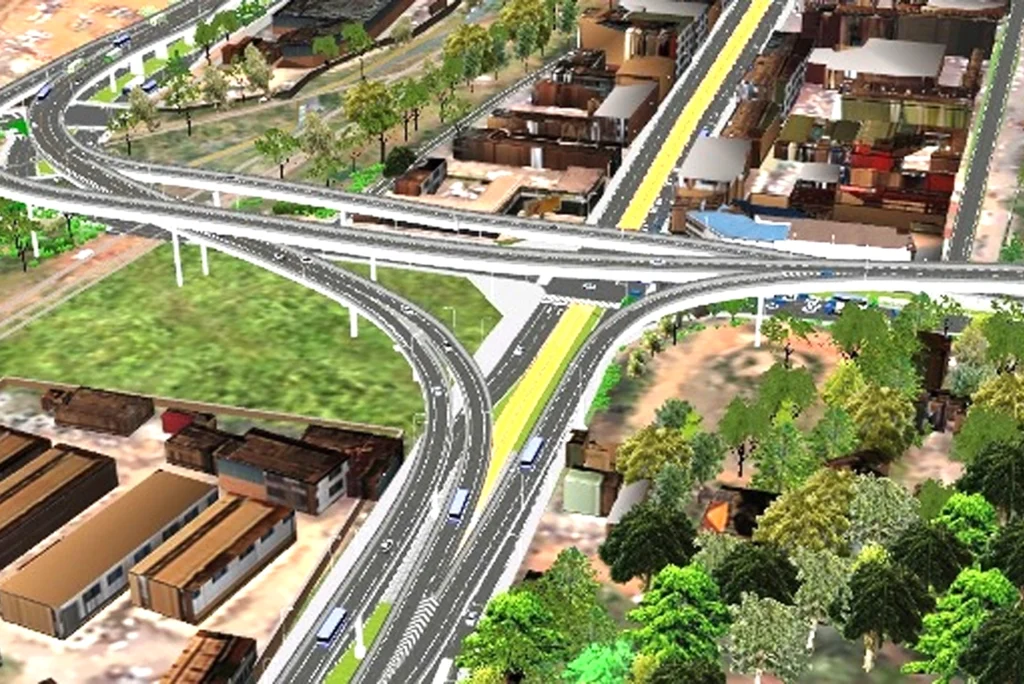The Kampala Flyover Road Project is a multi-phase infrastructure initiative aimed at constructing flyovers and expanded road networks to streamline traffic flow in key areas of Kampala. The project, which began in 2018, includes elevated roadways, flyovers, pedestrian bridges, and improvements to major intersections.
Key Objectives:
- Reduce Traffic Congestion: The primary goal is to ease the heavy traffic in Kampala, especially during peak hours. By introducing elevated roadways and redesigned intersections, the project is set to minimize bottlenecks at major junctions.
- Enhance Road Safety: With safer pedestrian crossings, dedicated lanes, and more organized traffic flow, the project aims to reduce road accidents.
- Improve Urban Aesthetics: Alongside the functional aspects, the flyover project is expected to give Kampala a modern look, aligning it with other major cities worldwide.
- Support Economic Growth: Efficient road networks enhance transportation and connectivity, crucial for trade and business activities within and beyond the city.
Phases of the Project
The Kampala Flyover Road Project is being implemented in stages to minimize disruption and ensure smooth progress.
Phase One: Clock Tower Flyover
The first phase, focused on the Clock Tower Flyover and the Queens Way section, was prioritized due to the heavy traffic congestion in this area. This phase includes:
- An elevated flyover bypass at Clock Tower.
- Widened roadways to improve the Queens Way section.
- Enhanced pedestrian facilities for safer crossings.
Phase One is expected to significantly reduce congestion in central Kampala and improve access to the Entebbe-Kampala expressway.
Phase Two: Kitgum House Flyover
The second phase involves the construction of another flyover near Kitgum House and the redesign of surrounding intersections. The goal is to connect more areas of Kampala seamlessly, linking the city’s major commercial hubs. This phase also includes:
- Construction of an elevated roadway near Kitgum House.
- Upgraded intersections to streamline the flow of vehicles.
- Improved sidewalks and pedestrian pathways.

Phase Two is expected to make a considerable impact on traffic patterns, alleviating pressure on Kampala’s primary roads.
Expected Benefits
1. Time Savings for Commuters
With the flyover and additional road capacity, daily commuters in Kampala can expect shorter travel times, especially during rush hours. Reducing traffic bottlenecks saves time and reduces vehicle operation costs.
2. Environmental Impact
By reducing traffic jams and vehicle idling times, the project will likely contribute to a decrease in carbon emissions, benefiting the environment and improving air quality in the city.
3. Boost to Local Economy
An efficient transportation system supports economic activities by ensuring that goods and services can be transported more quickly. Additionally, the project itself has created job opportunities for Ugandans, from construction to engineering and project management.
4. Improved Public Safety
The addition of pedestrian bridges and dedicated lanes will improve safety for pedestrians and cyclists, reducing the number of accidents and creating a more organized city layout.
5. Modernization of Kampala’s Cityscape
The flyover project is poised to give Kampala a modern look, with new roads, bridges, and green spaces. It is expected to transform Kampala into a city with organized traffic flow, providing a better experience for locals and visitors alike.
Challenges Faced
The Kampala Flyover Road Project has also encountered challenges, including:
-
Displacement of Residents and Businesses: With road expansion and construction, some residents and businesses have been displaced. The government has provided compensation in many cases, but the transition has not been easy for some affected parties.
-
Cost and Funding: Infrastructure projects of this magnitude are costly. Although Japan’s JICA is a major funder, the project still requires considerable resources from the Ugandan government.
-
Traffic Management During Construction: Managing traffic flow during construction phases has proven challenging, with detours and alternative routes affecting businesses and residents. Traffic in some areas has temporarily increased due to ongoing works, though this is expected to improve upon completion.
Future Outlook: A Vision for Kampala
The Kampala Flyover Road Project is just one part of Uganda’s vision for a modernized transport infrastructure. The success of this project could pave the way for additional flyovers and expressways in Kampala and other major cities in Uganda. It demonstrates a commitment to addressing the city’s rapid urbanization, positioning Kampala as a more efficient, accessible, and beautiful place to live and work.
Once completed, the Kampala Flyover Road Project will represent a significant step toward creating a more sustainable urban landscape, attracting investment, and improving the quality of life for Kampala’s residents.
When the Beat Drops, Dreams…
Another Cinderella Story (2008) spins the classic fairytale on its head—replacing glass slippers with glitter
Read MoreHe Could Change the Past
He Could Change the Past—but Would It Save Him or Destroy Him?
Read MoreHow to Create an Impressive…
In today's competitive job market, having a well-crafted CV (Curriculum Vitae) is essential to standing out. A CV is your...
Read More

